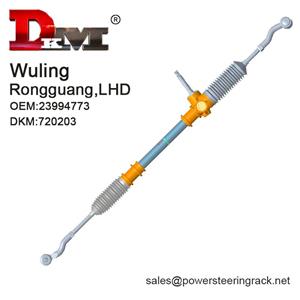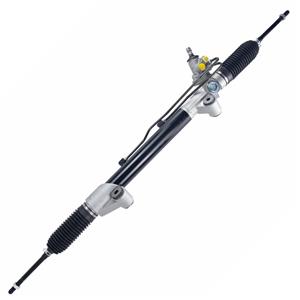-
Damage to the power steering rack may affect the flow of power steering fluid. Under normal circumstances, the fluid circulates in the system to play a lubricating and cooling role. If the power steering rack is damaged, the fluid may not flow properly, causing localized temperature increases.
-
The wear of the rack may cause the meshing between the rack and the pinion to no longer be smooth, or even gaps or abnormal contact. Especially when driving on bumpy roads, the vibration of the vehicle will aggravate this wear, causing the power steering rack to make a "clicking" sound.
-
Normally, the rack of the power steering rack should not move excessively. The purpose of the rack design is to fix the steering rack so that it can move smoothly during the steering operation and provide assistance to the driver through a hydraulic or electric power system.
-
After turning off the power, it is recommended to wait a few minutes to ensure that the electric steering system is completely powered off. This step is critical to the smooth progress of the reset process and ensure that the electronic control unit (ECU) inside the system no longer retains any cache or error codes.
-
If the noise comes from the front of the vehicle, especially near the wheel or chassis, and is accompanied by hydraulic hum, gear jamming, or hydraulic oil leakage, the problem is most likely with the power steering rack or power steering system.
-
Use a funnel to slowly pour the appropriate amount of power steering stop-leak fluid into the reservoir. Usually, the stop-leak fluid will start to work after mixing with the existing power steering fluid. Be careful not to pour too much stop-leak fluid to prevent the fluid level in the power steering rack from being too high.
-
Replacing the power steering rack is a technically demanding project involving multiple steps and details, requiring professional equipment and experienced technicians. The first step in replacing a power steering rack is to remove the steering system components. This includes removing the steering column, steering wheel, steering linkage, and power steering pump.
-
Continuously adding new fluid to delay repairs will cause car owners to ignore the seriousness of the problem. Once the hydraulic fluid in the power steering system is completely exhausted, the driver may suddenly lose steering assistance, especially when driving at low speeds, and the steering will become extremely heavy, making driving more difficult and dangerous.
-
When the driver turns the steering wheel, the steering shaft is connected to the rack through the gear. The turning force applied by the driver is transmitted to the rack through the gear, which then pushes the rack to move along the axial direction. The movement of the rack drives the steering connection components, which in turn causes the wheels to turn.
-
Although hydraulic power steering racks were once the mainstream choice for automotive steering systems, with the advancement of electronic technology, other types of steering systems have gradually occupied an important position in the market. However, this does not mean that hydraulic power steering racks have been completely eliminated.




